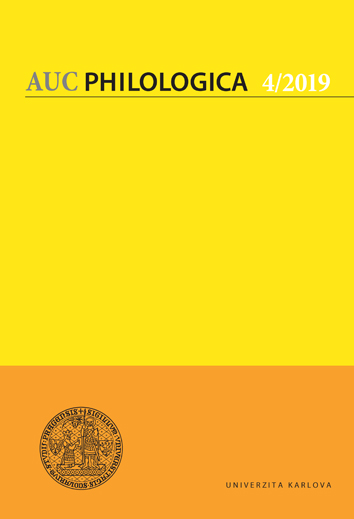Překlad jako rozhodovací proces: rozpracování konceptu J. Levého a aplikace tohoto přístupu na institucionální překlad
Translation as a decision process – Jiří Levý’s concept developed further and applied to Institutional Translation
Author(s): Tomáš SvobodaSubject(s): Language and Literature Studies, Translation Studies
Published by: Univerzita Karlova v Praze, Nakladatelství Karolinum
Keywords: translation; decision proces; Jiří Levý; institutional translation; translation manuals and style guides; game theory and translation
Summary/Abstract: This paper links three areas: reflections on translation as a decision process, the field of institutional translation, and translation manuals / style guides. Inherently, human translation is a decision-making process. As such, the process is subject to standards, specifications, and other restricting features. This is true for both literary and non-literary translation. The present article looks at institutional translation through a decision process–prism, paying special attention to translation manuals and style guides. The paper is divided into two main parts: In the first part, Jiří Levý’s concept of translation as a decision-making process is formalized to establish a model. The model eventually includes a taxonomy of ten distinctions: (1) Selecting the text to be translated; (2) Primary level vs. meta level; (3) Subsumption of (definitional and selective) instructions; (4) Acceptance vs. non-acceptance of instructions; (5) Quantitative vs. qualitative aspect of decision-making; (6) The quantity of decisions made by a translator compared to those taken by the original author; (7) Necessary vs. unnecessary surplus decisions; (8) Motivated vs. unmotivated decisions; (9) Selective instructions; (10) Conscious vs. unconscious decisions. The model is then represented in a concise flow chart. The paper also compares relevant passages of the earlier English version of Translation as Decision Process (1967) and the original Czech version from 1971. The comparison shows a shift in Levý’s understanding of translation process over time. In the second part, the above-mentioned taxonomy is applied to non-literary translation, specifically to the highly regulated context of institutional translations. Since institutional translation is predominantly governed by (written and unwritten) rules that affect translators’ decisions, it is translation manuals and style guides that play a key role in a translator’s decision process. Linking the newly devised model of the decision process with such manuals and/or style guides has proven to be a suitable way of creating a taxonomy for the latter, which has always been missing from research into such resources. The model bridges differences between various types of institutional discourse (here, supranational, corporate, and non-profit organisations are scrutinized). The current paper proposes a general systemization grid for translation manuals and style guides, by allocating individual resources to individual distinctions (No. 1–10) of the model. In addition, the contribution also points to the potential of game theory in exploring institutional translation.
Journal: Acta Universitatis Carolinae Philologica
- Issue Year: 2019
- Issue No: 4
- Page Range: 11-33
- Page Count: 23
- Language: Czech

